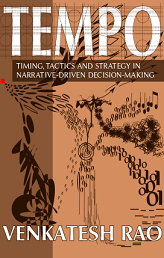Last week, for the 11th time in my adult life, I made a long-distance move to a different city. But for only the second time, it is to a city I’ve already lived in: Seattle. And the first time doesn’t really count, since it was for a year-long break from grad school I always knew I’d be back from.
When I left Seattle for Los Angeles 4 years ago, in June 2019, the intent was to stay a year, and decide where to go next right after my fellowship at the Berggruen Institute ended, with a return to Seattle only one low-likelihood possibility among many. At the time, I wrote about it in my post Regenerations, the fourth installment in a straggling decade-plus blogchain chronicling my moves. Then the pandemic happened, one year turned into four, and a city I thought I’d just pass through as a longer-term tourist turned into the venue of a significant life chapter. I was 44 when I left. I’m 48 now, a few months from 49, and less than two years away from the big 5-0.
But though it took longer than I expected, I’m once more in that familiar (and at this point, rather tiresome) liminal passage, having left one empty apartment behind, living out of another, with my stuff (now in 1.5 containers rather than 1) in transit somewhere in the containerized ether.
[Read more…]









